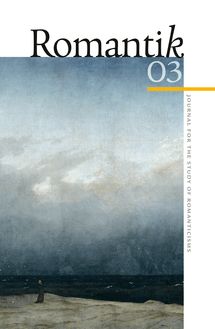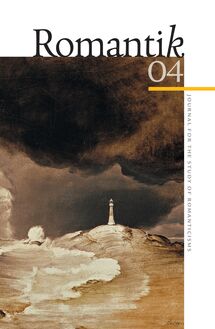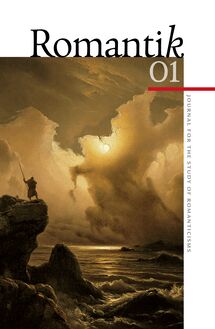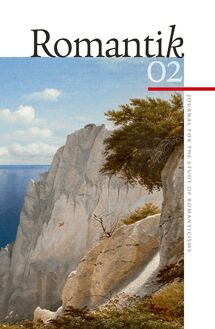-
 Univers
Univers
-
 Ebooks
Ebooks
-
 Livres audio
Livres audio
-
 Presse
Presse
-
 Podcasts
Podcasts
-
 BD
BD
-
 Documents
Documents
-
- Cours
- Révisions
- Ressources pédagogiques
- Sciences de l’éducation
- Manuels scolaires
- Langues
- Travaux de classe
- Annales de BEP
- Etudes supérieures
- Maternelle et primaire
- Fiches de lecture
- Orientation scolaire
- Méthodologie
- Corrigés de devoir
- Annales d’examens et concours
- Annales du bac
- Annales du brevet
- Rapports de stage
La lecture à portée de main
Découvre YouScribe en t'inscrivant gratuitement
Je m'inscrisDécouvre YouScribe en t'inscrivant gratuitement
Je m'inscrisEn savoir plus
En savoir plus

Description
Sujets
Informations
| Publié par | Aarhus University Press |
| Date de parution | 17 janvier 2014 |
| Nombre de lectures | 0 |
| EAN13 | 9788771248142 |
| Langue | English |
| Poids de l'ouvrage | 23 Mo |
Informations légales : prix de location à la page 0,0005€. Cette information est donnée uniquement à titre indicatif conformément à la législation en vigueur.
Extrait
i
i
Journal for the S tudy of r omantic S mS
Romantik 02
Journal for the S tudy of r omantic S mS
ISBN978-87-7124-228-7
9 788771242287
02 02
The articles in this second issue of Romantik:
Journal for the Study of Romanticisms
demonstrate the crucial role of emergent
regionalism and nationalism within the Romantic
movement. However, the contributors also
explore how the transmission of ideas and
inspiration took place across national as well
as linguistic boundaries, and how knowledge
was transferred from one domain of
knowledge to another. The articles provide a new
map of such cultural exchanges in the
Romantic era and the multiplicity of
agencies that made them possible. Romantik
continues to locate the plurality of European
Romanticisms within a comprehensive and
multilingual context.
1.0_Romantik02_omslag.indd 1 17/12/13 15.06
96473_cover_romantik_r1.indd 1 19-12-2013 08:58:32JOURNAL FOR THE S TUDY OF ROMANTIC ISMS
02Editors
Robert W. Rix (University of Copenhagen), Lis Møller (Aarhus University), Karina Lykke
Grand (Aarhus University), Anna Lena Sandberg (University of Copenhagen)
Editorial Board
Elisabeth Oxfeldt (University of Oslo), Gunilla Hermansson (University of Gothenburg),
Tomas Björk (Stockholm University), Lauri Suurpää (Sibelius Academy, Helsinki),
Leena Eilittä (University of Helsinki)
Advisory Board
Charles Armstrong (University of Bergen), Paula Henrikson (Uppsala University),
Jacob Bøggild (University of Southern Denmark), David Fairer (University of Leeds),
Karin Hof (Georg-August-Universität Göttingen), David Jackson (Univer
Stephan Michael Schröder (University of Cologne), Roland Lysell (Stockholm University)
Nordic Co-Editor (second issue)
Gunilla Hermansson (University of Gothenburg)
Editorial Consultant
Cian Dufy (St. Mary’s University College, Twickenham, London)
Main editorial contact
Robert W. Rix [rjrix@hum.ku.dk]
Editorial Secretary
Kasper Rueskov Guldberg (Aalborg University)
Visit www.romantikstudier.dk or www.unipress.dk
Subscription services
Aarhus University Press [unipress@au.dk] or [+45 87 15 39 65]
Subscription price
Annual subscription price is DKK 150.00
Price per issue
DKK 199.95 per issue plus postage
This page is protected by copyright and may not be redistributedFOREWORD 6
ARTICLES
Joep Leerssen
NOTES TOWARD A DEFINITION 9
OF ROMANTIC NATIONALISM
Günter Oesterle
THE CONCEPTION OF POPULARIT Y IN 37
THE ENLIGHTENMENT AND ROMANTICISM
Charles I. Armstrong
RECOGNITION AND DISSIMULATION 55
Nationalism and Genre in
James Clarence Mangan’s ‘The Lovely Land’
Gry Hedin
SEEING THE HISTORY OF THE EARTH 77
IN THE CLIFFS AT MØN
The Interaction between Landscape Painting and Geology
in Denmark in the First Half of the 19th Century
Dafydd Moore
‘TOO FRIVOLOUS TO INTEREST THE PUBLIC’? 1 03
Walter Scott, Richard Polwhele and Archipelagic Correspondence
This page is protected by copyright and may not be redistributedContents
02
BOOK REVIEWS
Peer E. Sørensen
Hovering Stasis 1 27
by Jacob Bøggild
Paula Henrikson
Romans and Romantics 1 33
ed. by Timothy Saunders, Charles Martindale,
Ralph Pite, and Mathilde Skoie
Katarina Båth
Isles of Felicity 1 36
by Gunilla Hermansson
Anders Burman
The Book and the People 142
by Jakob Ladegaard
ABOUT THE AUTHORS 147
This page is protected by copyright and may not be redistributedThe themes outlined in the articles of the present edition of Romantik are truly
transnational. Two of these articles were frst heard as papers at a one-day
conference entitled ‘Disseminating Romanticism: European Connections and Regional
Disconnections’, kindly sponsored by the Department of Culture and Global
Studies, Aalborg University, Denmark. The theme of the conference was timely.
It is ironic that in our globalized world, the discipline of Romantic Studies is of -
ten disconnected from the cosmopolitan milieu in which the Romantics moved.
The standard myth of the Romantic genius isolates the artist as both singular
and solitary. But the writers and painters of the period were part of various com -
munities and networks; they corresponded across national borders, and their
productions were infuenced by international currents. We need a greater focus
on the channels of dissemination in terms of the import/export of books, the
exchange of letters and personal contacts. What was the efect of technological
advances (transport, printing, postal service, etc.) on the development of con -
nections and the dissemination of Romanticism? To what extent were particular
regional Romanticisms shaped by their emulation of and competition with na -
tional and international currents?
When training the lens on how ideas and aesthetic models were transmitted,
it may be rewarding to gauge what barriers were in place to prevent the spread
of Romanticism – censorship (as was the case in Spain and Portugal), national
antagonism, publishers’ commercial considerations, etc. Factors like these had
an enormous impact on how Romanticism morphed into diferent shapes and
forms in various countries. The lack of dedicated focus on such issues is partly a
problem with academic institutions in various countries, which tend to
emphasise a national tradition and thereby place limits on the scope of investigation.
However, it makes sense to look at diferent yet similar Romanticisms and bring
these into productive dialogue with one another. In this way, we hope to begin a
possible remapping of the Romantic topography in Europe and beyond.
If we on one level are interested in international developments – its linkages –
perhaps we have also reached the stage where we need to re-calibrate our ideas of
Romanticism in order to more accurately register regional developments.
Sometimes the nation state is not the most meaningful category to use. Rather, we may
investigate the internal fssures of domestic oppositions, antipathies, and
competiCONTENTS
This page is protected by copyright and may not be redistributedFOREWORD
tion. For Britain, the ‘four nations’ approach has been one way forward. But here,
as well as for Europe in general, more could and perhaps needs to be done. This
issue ofers articles that zero in on important questions that will guide us in our
future investigations. This issue also contains articles which challenge other ways
of drawing boundaries, such as those that are traditionally seen to exist between
art and science and between Enlightenment and Romanticism. In this way, we
hope the thematic range is wide enough to interest many researchers, teachers,
and students, and yet narrow enough to show the consistency of the journal’s
innovative approach.
Welcome to Romantik!
The editors
CONTENTS
This page is protected by copyright and may not be redistributedRomantic
Nationalism
CONTENTS
This page is protected by copyright and may not be redistributedJOEP LEERSSEN
[ ]
ABS TRA CT
NOTES TOWARDS
A DEFINITION Romantic
OF ROMANTIC
NATIONALISM Nationalism
While the concept ‘Romantic nationalism’ is becoming widespread, its current usage tends
to compound the vagueness inherent in its two constituent terms, Romanticism and
nationalism. In order to come to a more focused understanding of the concept, this article
surveys a wide sample of Romantically infected nationalist activities and practices, and
nationalistically infected cultural productions and refections of Romantic vintage, drawn
from various media (literature, music, the arts, critical and historical writing) and from dif -
ferent countries. On that basis, it is argued that something which can legitimately be called
‘Romantic nationalism’ indeed took shape Europe-wide between 1800 and 1850. A dense
and intricately connected node of concerns and exchanges, it afected diferent countries,
cultural felds, and media, and as such it takes up a distinct position alongside political and
post-Enlightenment nationalism on the one hand, and the less politically-charged
manifestations of Romanticism on the other. A possible defnition is suggested by way of the
conclusion: Romantic nationalism is the celebration of the nation (defned by its language,
history, and cultural character) as an inspiring ideal for artistic expression; and the
instrumentalization of that expression in ways of raising the political consciousness.
. . . . . . . . .
KEYW ORDS European Romanticism, Nationalism, Volksgeist, Friedrich Carl von Savigny,
Organicism.
Introduction
The conceptual splicing of Romanticism and nationalism, either as ‘Romantic
1nationalism’ or as ‘national Romanticism’, is becoming increasingly widespread.
‘Romantic nationalism’ now has a sizeable Wikipedia entry, and established
usage of these terms is found in the felds of nineteenth-century history-writing,
music, the arts, and architecture. To some extent this is wholly unsurprising: the
two movements arose jointly in the deca
-
 Univers
Univers
-
 Ebooks
Ebooks
-
 Livres audio
Livres audio
-
 Presse
Presse
-
 Podcasts
Podcasts
-
 BD
BD
-
 Documents
Documents
-
Jeunesse
-
Littérature
-
Ressources professionnelles
-
Santé et bien-être
-
Savoirs
-
Education
-
Loisirs et hobbies
-
Art, musique et cinéma
-
Actualité et débat de société
-
Jeunesse
-
Littérature
-
Ressources professionnelles
-
Santé et bien-être
-
Savoirs
-
Education
-
Loisirs et hobbies
-
Art, musique et cinéma
-
Actualité et débat de société
-
Actualités
-
Lifestyle
-
Presse jeunesse
-
Presse professionnelle
-
Pratique
-
Presse sportive
-
Presse internationale
-
Culture & Médias
-
Action et Aventures
-
Science-fiction et Fantasy
-
Société
-
Jeunesse
-
Littérature
-
Ressources professionnelles
-
Santé et bien-être
-
Savoirs
-
Education
-
Loisirs et hobbies
-
Art, musique et cinéma
-
Actualité et débat de société
- Cours
- Révisions
- Ressources pédagogiques
- Sciences de l’éducation
- Manuels scolaires
- Langues
- Travaux de classe
- Annales de BEP
- Etudes supérieures
- Maternelle et primaire
- Fiches de lecture
- Orientation scolaire
- Méthodologie
- Corrigés de devoir
- Annales d’examens et concours
- Annales du bac
- Annales du brevet
- Rapports de stage









